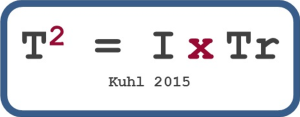 In casual conversation, when we talk about talent, we typically mean natural, “in-born” gifts, such as quick wit or outgoing personality, or special aptitudes, such as being good with numbers or sports or music. For purposes of understanding the Performance Equation, we’re taking a slightly more formal approach to defining Talent.
In casual conversation, when we talk about talent, we typically mean natural, “in-born” gifts, such as quick wit or outgoing personality, or special aptitudes, such as being good with numbers or sports or music. For purposes of understanding the Performance Equation, we’re taking a slightly more formal approach to defining Talent.
In this context, Talent is made up of two components: Inherent Traits and Trainable Skills, Knowledge, and Abilities. In the previous post, we discussed how Dr. John C. Marshall and his research team came to identify the six personality traits that have now been statistically demonstrated to predict high performance and retention in business roles. As you recall, these six traits are essentially “hard-wired” into your personality by the time you reach early adulthood. These are the Inherent Traits in this model.
So what, then, are the trainable skills? With apologies to public radio host Michael Feldman, trainable skills, knowledge, and abilities are the answer to the question, “Whaddaya know?” They are the other half of the can do concept.
The great thing about your skills, knowledge, and ability is that you can always, at any point during your life, learn new stuff! In fact, you are typically learning new stuff all the time.
Sometimes you do it unintentionally. Just think of all the advertising slogans that you know. Chances are, you had absolutely no desire to learn them, but sheer repetition pounded them into your brain. (Gosh, thanks, Madison Avenue! )
You can also choose to intentionally learn new information, master new skills, and acquire additional knowledge through informal and formal channels—reading books, taking courses, following blogs. The  list of sources and opportunities is almost endless. Heck, today you can sign up for a MOOC and take courses from Harvard on neuroscience or particle physics while sitting at home at your own computer, wearing your bunny slippers and sipping Mai Tais. (Although I can’t vouch for how much you’ll retain in that scenario.)
list of sources and opportunities is almost endless. Heck, today you can sign up for a MOOC and take courses from Harvard on neuroscience or particle physics while sitting at home at your own computer, wearing your bunny slippers and sipping Mai Tais. (Although I can’t vouch for how much you’ll retain in that scenario.)
The point of all of this is simply to point out that while you don’t seem to have much choice about some aspects of your Talent, other aspects are yours to command. You can always choose which new skills, knowledge, and abilities you’d like to master, and by dint of your effort, you can accomplish exactly that. (Of course, the amount of effort it takes to do this will vary. More about that later.)
With that understanding firmly in place, believe it or not, it’s now time to explain the first component of exponential performance. (And you thought I’d never get around to it!)
 In my updated equation for exponential performance, your Talent can be more than just the sum of your Inherent Traits and your Trainable Skills. You significantly enhance the value of your Talents when you consciously align your Trainable Skill choices with your unique Inherent Traits. Or, to express this concept as a formula (see blue box), Talent increases exponentially (T2) when you multiply your Inherent strengths (I) by acquiring skills, knowledge, and abilities (Tr) that build on those strengths.
In my updated equation for exponential performance, your Talent can be more than just the sum of your Inherent Traits and your Trainable Skills. You significantly enhance the value of your Talents when you consciously align your Trainable Skill choices with your unique Inherent Traits. Or, to express this concept as a formula (see blue box), Talent increases exponentially (T2) when you multiply your Inherent strengths (I) by acquiring skills, knowledge, and abilities (Tr) that build on those strengths.
To take a simplistic example, consider your personal comfort zone around conflict. If you are inherently comfortable with conflict, you might readily build on that strength by joining a debate team or taking a class in negotiating skills. If, however, you prefer to avoid conflict, you would be at a bit of a disadvantage, needing first to overcome your general reluctance to engage before being able make the most of the new learning.
Well-known management guru Peter F. Drucker was getting at this same idea when he said, “It takes far more energy to improve from incompetence to mediocrity than to improve from first-rate performance to excellence.” (1999) In a nutshell—build on your strengths. Why waste effort on weaknesses?
And speaking of effort…having traversed the trail to exponential Talent, it’s time to take the exit toward exponential Effort in the next post.
~~~